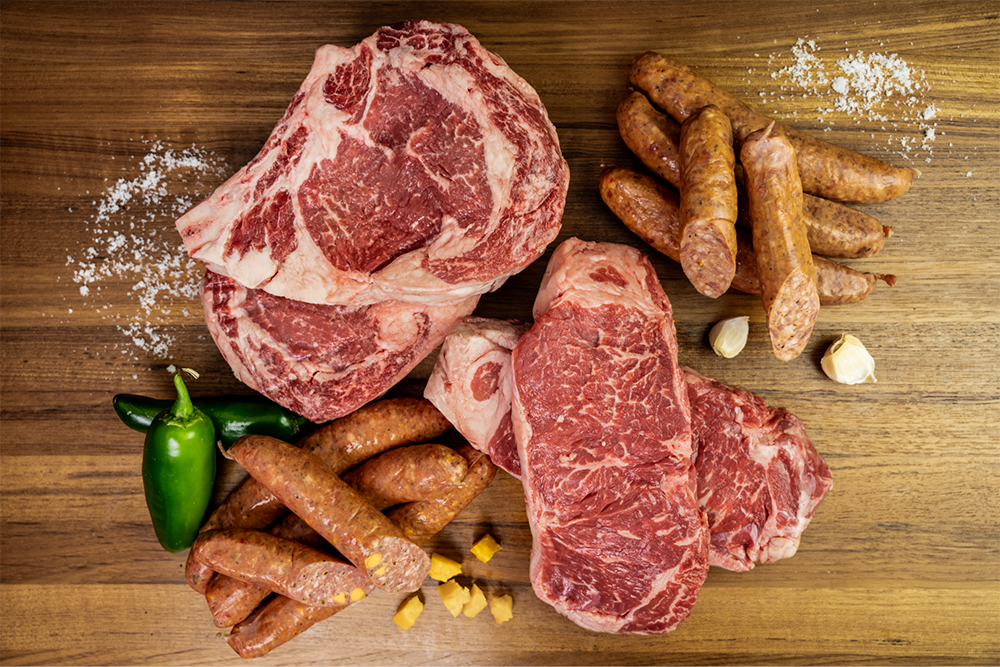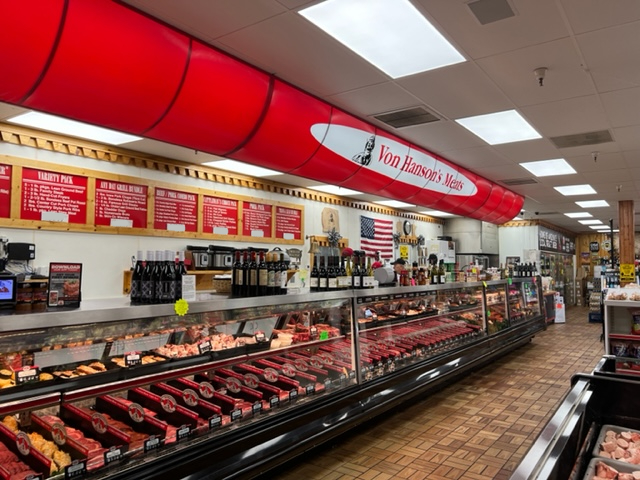Why Citizens Love Bagley Farms Meat Market Edwardsville IL for Their Meat Buying
Why Citizens Love Bagley Farms Meat Market Edwardsville IL for Their Meat Buying
Blog Article
Reveal the Art of the Butcher's Cut in a Modern Meat Market
In the ever-evolving landscape of modern meat markets, the butcher's cut has actually transcended its typical roots, combining age-old craftsmanship with contemporary practices. Today's butchers are not just cpus of meat; they are educated craftsmens that stress sustainability and ethical sourcing. Their know-how in choose and preparing cuts tailored to particular cooking requirements uses an unmatched dining experience. What absolutely sets the modern butcher apart is their capacity to forge a much deeper link in between consumers and the beginnings of their meat. Exactly how do these masters balance tradition with technology, and what effects does this have for the future of meat usage?
Advancement of Butchery Strategies
The advancement of butchery methods mirrors an abundant tapestry of advancement and adjustment driven by developments in technology, modifications in customer demand, and a deeper understanding of meat science. Historically, butchery was a craft gave through generations, with techniques refined over centuries to optimize yield and flavor. The commercial transformation ushered in mechanization, transforming conventional methods and making it possible for large processing.
The mid-20th century saw butchery strategies additionally improved by scientific understandings into muscle biology and meat aging, improving both inflammation and preference. Technologies like vacuum packaging and refrigeration extended product shelf-life, enabling butchers to expand offerings and boost quality control. This period also marked the rise of specialized tools, such as band saws and meat slicers, which increased precision and efficiency in meat processing.

The 21st century has presented electronic modern technology right into the butchery world. Electronic systems now aid in monitoring animal provenance and optimizing cuts to meet details customer choices. In addition, a rebirth in artisanal butchery has actually emerged, blending traditional abilities with modern expertise to deal with consumers looking for moral and sustainable meat options. This evolution underscores a dynamic interaction in between custom and advancement, meeting modern demands while preserving the craft's heritage.
Recognizing Meat Cuts
Comprehending the intricacies of meat cuts is important for both butchers and customers seeking top quality and value. Each cut originates from a different component of the animal, imparting one-of-a-kind tastes, textures, and cooking approaches - bagley farms meat market edwardsville il. Mastery of these distinctions not only enhances cooking experiences but likewise optimizes the utility of each carcass. For butchers, exact cuts reflect skill and regard for the craft, ensuring very little waste and optimal yield.

Understanding muscle mass composition is essential; muscle mass used much more frequently by the animal tend to be tougher and are best suited for sluggish food preparation methods, while less-used muscular tissues, like those located in the loin, are more tender and suitable for grilling or roasting. important site Knowledge with these distinctions empowers consumers to make enlightened options, improving their culinary endeavors.
Selecting High Quality Meat
Picking the ideal meat involves more than just choosing an aesthetically enticing item from the display. The art of selecting top quality meat calls for a discerning eye and knowledge of particular features that symbolize freshness and quality.
Second of all, consider the marbling, which describes the white flecks of fat within the muscle. Appropriate marbling is an essential indicator of inflammation and taste, as it melts during cooking, improving the meat's juiciness. Keep in mind, greater marbling frequently associates with premium top quality cuts, such as USDA Prime.
Texture is one more essential aspect; meat should really feel solid to the touch, not slimed or excessively soft. In addition, bear in mind the fragrance. Fresh meat should have a tidy, neutral smell, cost-free from any sour or off-putting odors.
Combining Cuts With Cooking Techniques

Conversely, tougher cuts like brisket and chuck roast are abundant in collagen, which damages down right into jelly when cooked slowly. These cuts are excellent for braising or sluggish roasting, permitting the meat to soften with time and create deep, intricate flavors. Cuts such as brief ribs and pork shoulder make out well with slow-cooking approaches, where expanded cooking times transform their robust appearances into succulent dishes.
Lamb shanks and oxtail, which require prolonged cooking to tenderize, are ideal candidates for stewing or slow simmering. These approaches coax out abundant, passionate tastes while preserving wetness. look at this website By comprehending the special features of each cut, cooks and home chefs alike can raise their culinary creations, ensuring each dish is both pleasing and remarkable.
The Butcher's Duty Today
Browsing the developing landscape of the modern-day meat market, the butcher's role today expands beyond plain prep work of cuts. Contemporary butchers are culinary artisans, instructors, and supporters for sustainable techniques.
Along with crafting accurate cuts, butchers currently involve directly with consumers, supplying cooking recommendations and customizing choices to match individual requirements and choices. Their know-how in meat aging, marbling, and flavor profiles equips consumers to make enlightened decisions, enhancing their culinary experiences. This personalized service exhibits the butcher's advancing role as a trusted consultant in the kitchen area.
In addition, butchers are pivotal in reducing waste, making use of entire pets to create diverse products such as sausages and supplies. This thorough technique not just values the pet but also lines up with contemporary sustainability objectives. This way, the modern-day butcher embodies both practice and technology, adapting to an ever-changing market while preserving the artistry and integrity of their craft.
Conclusion
Mastery in understanding varied meat cuts and high quality indicators encourages butchers to supply educated recommendations, straightening certain cuts with ideal food preparation techniques. By honoring historic methods while embracing modern needs, the butcher's function remains essential in today's advanced meat market.
Report this page